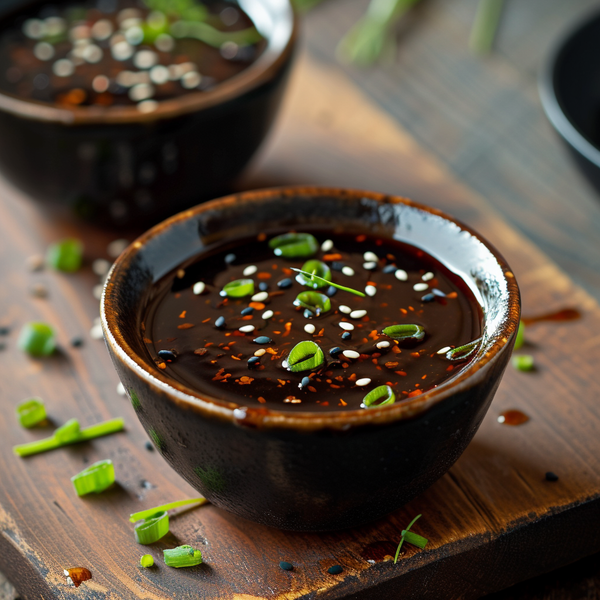
Hoisin sauce
Hoisin sauce is a thick, fragrant sauce commonly used in Chinese cuisine. It's made from a combination of fermented soybean paste, garlic, vinegar, sesame oil, chilies, and sweeteners, creating a savory, sweet, and slightly spicy flavor profile. Hoisin sauce is incredibly versatile and can be used in various ways in cooking:
Marinades:
Hoisin sauce is often used as a marinade for meat, poultry, and seafood, lending its distinctive sweet and savory flavors to the ingredients. It's particularly popular in marinades for barbecued pork, known as Char Siu.
Glazes:
Due to its thick consistency and sweet flavor, hoisin sauce makes an excellent glaze for roasted and grilled dishes, including ribs, chicken, and duck.
Stir-Fries:
A staple in stir-fry cooking, hoisin sauce is added to the wok with vegetables and protein, coating them in its rich, flavorful sauce. It's commonly used in dishes like beef and broccoli or Kung Pao chicken.
Dipping Sauces:
Hoisin sauce can be served as a dipping sauce on its own or mixed with other ingredients like peanut butter or sesame oil to create a more complex flavor for spring rolls, dumplings, and Peking duck.
Noodle Dishes:
It's used to flavor noodle dishes, adding depth and richness to the sauce. Hoisin can be found in recipes like Vietnamese Pho as a condiment or incorporated into the sauce for lo mein and other noodle stir-fries.
Soups and Broths:
A small amount of hoisin sauce can be added to soups and broths to enhance their flavor with a touch of sweetness and spice.
Vegetable Dishes:
Hoisin sauce can be used to season vegetable dishes, providing a hearty umami flavor that can make even simple stir-fried greens more exciting.
Sandwiches and Wraps:
Inspired by Vietnamese cuisine, hoisin sauce is often used as a spread in Banh Mi sandwiches and can be a flavorful addition to wraps and lettuce cups.
Sauces and Gravies:
It can be incorporated into sauces and gravies for an Asian-inspired twist, adding complexity to both meat-based and vegetarian dishes.
When using hoisin sauce in cooking, it's important to balance its strong flavors with other ingredients to ensure it doesn't overpower the dish. Due to its sweetness and saltiness, hoisin sauce should be used sparingly, and its addition can reduce or eliminate the need for additional salt or sugar in a recipe. Its versatility and unique taste make hoisin sauce a valuable ingredient in the kitchen, capable of elevating a wide range of dishes with its distinctive Asian flair.
Nutritional Information
calories
220
carbohydrates
44.08 g
fats
3.39 g
protein
3.31 g